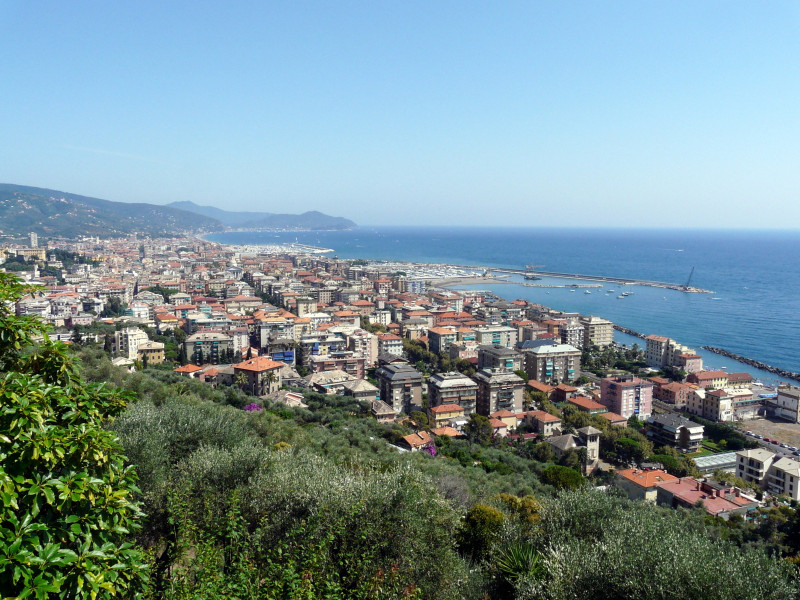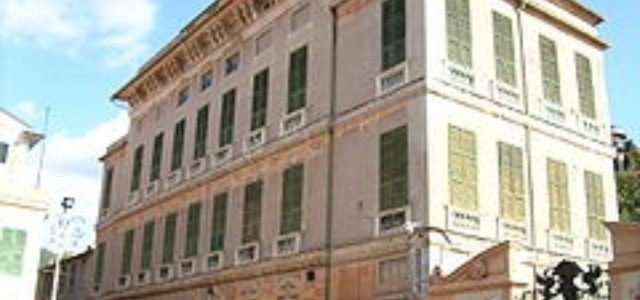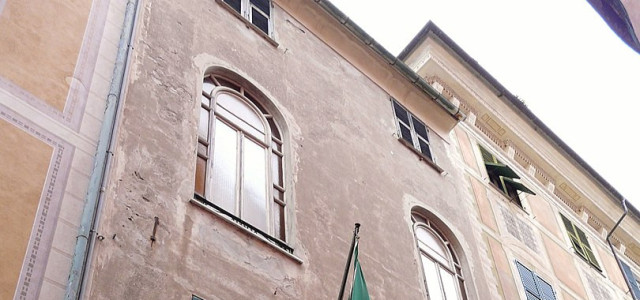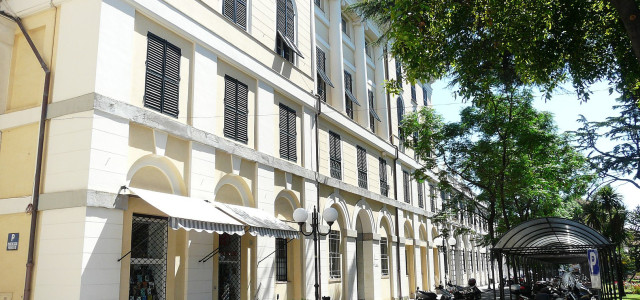Chiavari
Chiavari is a town and comune on the Italian Riviera in the Province of Genoa, region of Liguria. It is situated near the mouth of the Entella River, in the center of a fertile plain surrounded by mountains except on the southwest, where it comes down to the Mediterranean Sea. Tourist interest in this town is due to the very clean sea (Blue Flag for clean waters from 1987 until today) and to the expansion of its historical center, that includes typical Genoese style palaces of great value. As of 2007, the town had approximately 28,000 inhabitants. Geography Chiavari is situated near the mouth of the Entella River. It lies in a fertile plain surrounded by hills, with the sea to the southwest. It is a tourist center and regional market for agricultural produce. Chair making, lace and silk manufacture, and slate working are also part of its economy. History Chiavari grew up on the traces of a Roman camp on the Via Aurelia. A pre-Roman necropolis, which dates from the 8th to 7th century BC, has been uncovered there. The old town contains numerous arcades and buildings from the 13th century, including a castle, several mansions, and the nearby Church of San Salvatore di Lavagna, which was founded in 1224 by Pope Innocent IV. The cathedral, was later rebuilt in 1613. Known famously as a center of ancient humanistic tradition, Chiavari has a public library with a collection of manuscripts and incunabula. The beauty of the city is much enhanced by the churches of the Madonna dell'Orto, San Francesco, and San Giovanni. After the discovery of the conspiracy of the Fieschi, in 1542, and the capture of Chiavari by the Counts of Lavagna, the town suffered much, being associated with the conspirators. Among its illustrious citizens were: Luca Cantiano di Moneglia, founder of a school of painting, and Giuseppe Gregorio Solari, translator of many Latin poets. From 1805 to 1814, Chiavari served as the capital of the short-lived Apennins department of the First French Empire. Chiavari is the home of the Chiavari chair designed in 1807 by a local cabinet maker, Giuseppe Gaetano Descalzi. The chair was a success and led to the opening of many factories in Chiavari and surrounding towns. Places of interest Auditorium San Francesco: Built between 1229 and 1234, the church now belongs to the comune of Chiavari. Santuario di Nostra Signora dell'Orto: Finished in 1633, the cathedral is the town's main place of worship. Castello di Chiavari: The Medieval castle was originally built in 1146. Palazzo Rocca: The palace has an important art gallery of Genoese art. Transport Chiavari railway station was opened in 1868. It is located in a passageway between the town centre and the promenade, and forms part of the Pisa–La Spezia–Genoa railway. Gallery References External links Official website of Chiavari (Italian) Technical High School (Italian) Chiavari - Catholic Encyclopedia article about the Roman Catholic diocese of Chiavari Chiavari's Castle: virtual visit and info This article incorporates text from a publication now in the public domain: Chisholm, Hugh, ed. (1911). Encyclopædia Britannica (11th ed.). Cambridge University Press.




